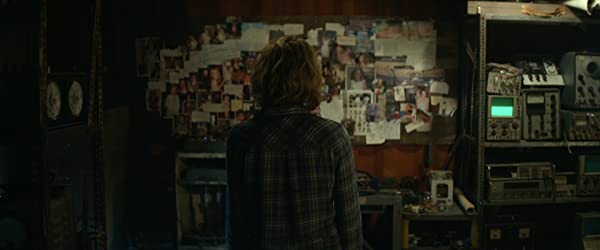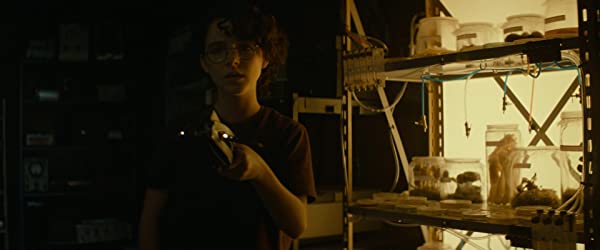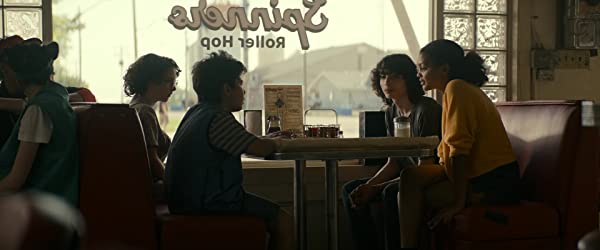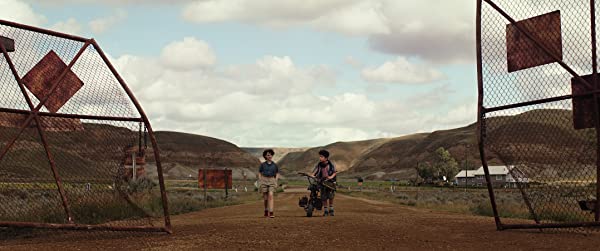Ghostbusters: Afterlife: Fifty-Percent Good

Ghostbusters: Afterlife Does Not Quite Come Alive
Ghostbusters: Afterlife has several excellent moments, a great protagonist, and a heartfelt core, yet is underwhelming in a lot of ways. Those who watch it will remember it mainly for its fan service, and though that’s kind of the point—it’s not great we have a lot of movies made with that in mind.
My negative opinions are for several reasons. One is that Ghostbusters: Afterlife is too long. It’s nearly two hours, and that’s because of poor pacing. Perhaps that’s the modern tendency to prefer brevity talking, but there’s no economy of storytelling here. Not only do moments drag, but entire scenes exist to establish one plot point. Why do the kids go up to the mountain to hang out? Almost entirely so someone can hear the word “Gozer.”

References Are Great, But More Needs To Happen
And this is baffling because of how the movie strings the beads of its plot. There are a lot of moments being juggled, from implied romances to potential conflict, but a lot of it happens off-screen or doesn’t go that far. Resolutions are shockingly scarce in Ghostbusters: Afterlife. I’m not usually a fan of the “one week later” happy ending scene, but some further clarification of what happened before, after, or even during this movie would’ve been nice. I’m not saying to spoon-feed the audience, but this feels unfinished.
What’s worse is that a lot of the narrative bandages employed to help with this problem heavily rely on genre familiarity, franchise knowledge, and general movie plot expectations to do the work. The stuff with the mayor, most of Lucky’s feelings on matters, the other three original Ghostbusters’ involvement: it’s simply assumed you’d put the pieces together yourself. The main plot with Egon at least holds up as a coherent cause and effect—but that’s damning with faint praise. His “redemption” for massively neglecting his family feels a little hollow and without adequate reasons. He could’ve done more.

The Handling Of Egon Spengler Has Two Aspects
However, the Egon plot is in the movie for a different reason. The internal logic isn’t the main purpose. It’s an excuse to celebrate and honor a lost icon. I deeply appreciate the love and care that went into memorializing Harold Ramis. Harold’s mark on pop culture is tremendous, and he’ll be missed.
And they honor his most famous character even further by canonically carrying on his legacy. McKenna Grace is killing it as his granddaughter: the badass, snarky, hyper-smart, hyper-competent Phoebe. I can’t speak for how they handled the implication of her being on the autism spectrum—or the subtext of genius being genetic—but as Egon’s replacement and likely new-generation Ghostbuster for future movies, she’s a lot of fun. Phoebe is a perfect protagonist for this film, having the raw curiosity and recklessness to carry a mystery plot. Her interactions with Paul Rudd were excellent, with them making for a chaotic and adorable science duo.

Phoebe Is The Best Part of Ghostbusters: Afterlife
As for the rest of the family, Carrie Coon brings both a sense of world-weariness while remaining sarcastic, funny, and down-to-earth as the mom. And do I even need to say that Finn Wolfhard killed it? He’s going to be and already is a megastar of genre films. His unique energy and charisma are always engaging.
Even the side characters are great. Lucky is neglected by the plot, but Celeste O’Conner seems like they’re having a lot of fun—and gets arguably the best one-liners. Podcast is this playfulness times ten, though. I’m not a fan of characters with aggressively gimmicky quirks, but dang does Logan Kim make for such a likable comic relief. His interactions with Dan Aykroyd put a massive smile on my face.

An Great Core And Extended Cast Saves The Film
This brings me to the big-ticket item: the bait of nostalgia. I’m not happy that it worked, but it worked. Seeing the old actors reprise their roles was glorious. The proton packs, the ghost traps, and the practical effects for the Terror Dogs all just scratched a massive itch. This movie comes alive when it is about fighting ghosts. The child-like glee of using a lasso to catch monsters still holds up even nearly forty years later. Ghostbusters: Afterlife springs from a lethargic pace into madcap fun the moment it accepts what it is. And what it is, is a shameless love letter with a stupid-large budget.
As a generic adventure film, Ghostbusters: Afterlife is sloppy and doesn’t explain things to a new viewer. It feels unfinished, unfocused, and slow. But as a celebration of an iconic piece of pop culture, it’s a joyful explosion. This isn’t Ghostbusters for a new audience, but it has the heart to make that a possibility worth anticipating.

Possibly Related Posts:



Comments